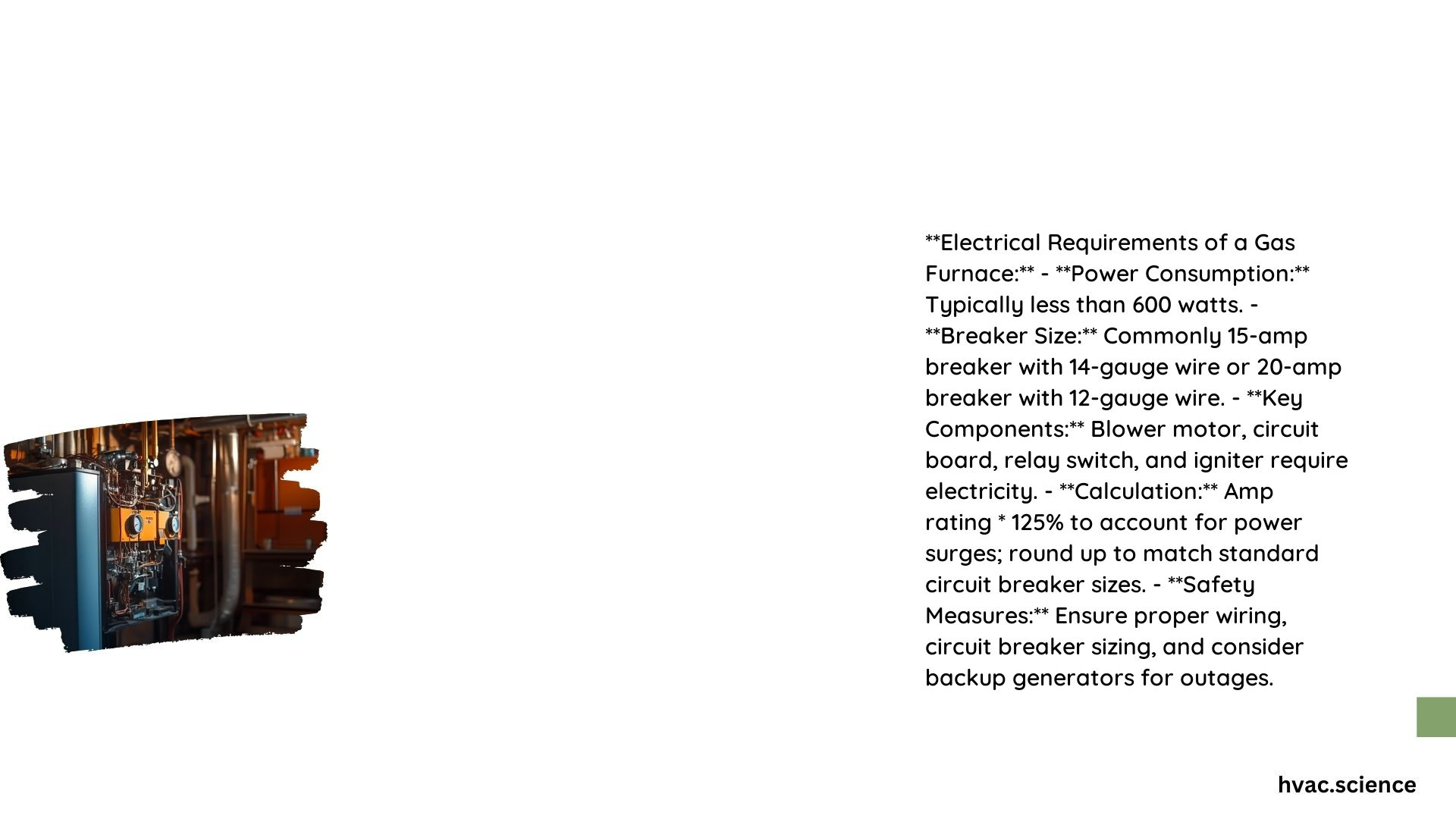Comprehensive Guide to Electrical Requirements of a Gas Furnace
1. Is it acceptable to plug a gas-fired furnace into a receptacle, or must it be hard-wired?
It is generally not recommended to plug a gas-fired furnace into a receptacle. Instead, it should be hard-wired to ensure safe and reliable operation. Hard-wiring provides a more stable and secure electrical connection, which is crucial for the proper functioning of the furnace and its safety features.
2. What are the specific electrical requirements for a gas furnace, including voltage and amperage specifications?
- Voltage: Most gas furnaces operate on standard household voltage, typically 120 volts AC.
- Amperage: The amperage requirements vary based on the furnace’s power consumption. Here are some general guidelines:
- Amp Rating: The amp rating is usually specified by the manufacturer and can be found on the nameplate or in the documentation. Common amp ratings for gas furnaces range from 3 to 10 amps, depending on the model and size.
- Circuit Breaker Size: To determine the circuit breaker size, you need to calculate the total amp load of the furnace. A common practice is to multiply the amp rating by 125% to account for power surges. For example, if the furnace requires 5 amps, you would need a circuit breaker rated for 6.25 amps (5 amps * 1.25). This value should then be rounded up to the nearest standard circuit breaker size, such as 15 amps or 20 amps.
- Wire Gauge: The wire gauge should match the amp rating. For instance, a 14-gauge wire is typically used with a 15-amp breaker, and a 12-gauge wire is used with a 20-amp breaker.
3. What are the key safety considerations and code requirements for installing a gas furnace, particularly regarding clearance to combustibles and venting systems?
- Clearance to Combustibles: Gas furnaces must be installed with adequate clearance to combustible materials to prevent fires. The specific clearance requirements can vary depending on local building codes and the manufacturer’s instructions. Generally, there should be at least 6 inches of clearance to combustible materials.
- Venting Systems: Proper venting is critical for safe operation. The venting system must be installed according to the manufacturer’s specifications and local building codes to ensure that combustion gases are safely expelled outside the home. This includes ensuring that the venting system is properly sized, securely connected, and free from obstructions.
- Professional Installation: It is highly recommended to hire a professional HVAC technician who is experienced in gas furnace installations. They can ensure that all safety measures and code requirements are met, including pressure testing the gas line and installing carbon monoxide detectors.
4. What are the gas furnace electrical requirements, including wattage usage and the total electricity consumption?
- Wattage Usage: Gas furnaces typically use a small amount of electricity, usually less than 600 watts, to power components such as the blower motor, ignition system, and control circuits.
- Total Electricity Consumption: The total electricity consumption is relatively low compared to electric furnaces. For example, a gas furnace might use around 300 to 800 watts, depending on the model and efficiency.
- Calculations: To determine the exact wattage usage, you can use the formula: Wattage = Voltage * Current. For instance, if the furnace operates at 120 volts and draws 5 amps, the wattage would be 120 volts * 5 amps = 600 watts.
5. What are the electrical components of a gas furnace, and how do they function within the system?
- Blower Motor: The blower motor uses electricity to circulate heated air throughout the home. It is a critical component that ensures efficient heat distribution.
- Circuit Board: The circuit board controls the furnace’s operation, including the ignition sequence, blower operation, and safety features. It requires a stable electrical supply to function correctly.
- Relay Switch: The relay switch is an electrical component that helps control the flow of electrical current to various parts of the furnace, such as the blower motor and ignition system.
- Igniter: The igniter uses electricity to ignite the gas for heating. There are different types of igniters, such as electronic igniters and glow plug igniters, each with different electrical requirements.
References
- Leith Heating & Cooling: Gas Furnace Electrical Requirements – St. Charles, IL, Must Know
- Eheatcool: Gas Furnace Electrical Requirements: A Step-by-Step Guide
- Felix Appliance Heating & Air: Gas Furnace Electrical Requirements and Breaker Sizes.

